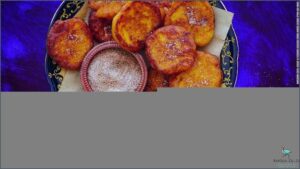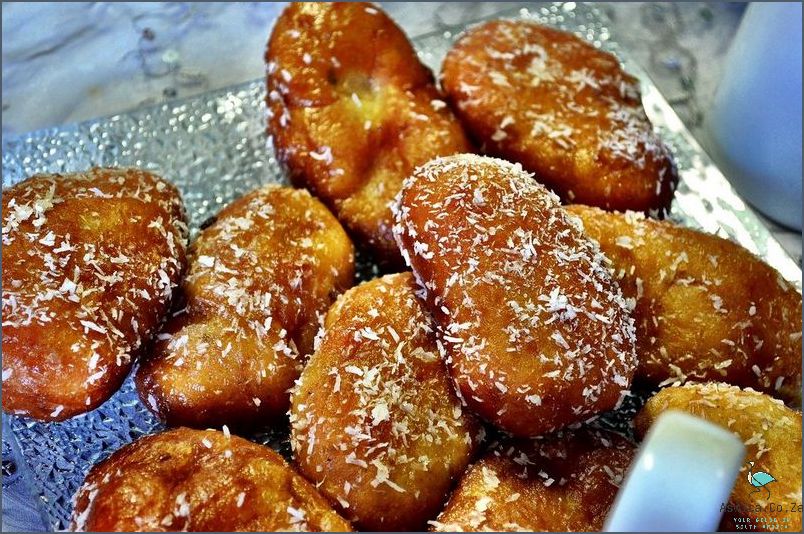
Cape Malay cuisine is a unique blend of Malaysian, Indonesian, Indian, and Chinese influences. The Cape Malays are a ethnic group descended from South East Asian slaves brought to the Cape of Good Hope by the Dutch in the 17th century. Cape Malay cuisine is known for its use of spices, coconut milk, and rice. Curries, stews, and baked goods are common staples of the Cape Malay diet.
Contents
Cape Malay Traditional Food
Cape Malay traditional food is a unique and flavorful type of cuisine that originates from the Cape Malay people of South Africa. This type of food has influences from Indonesian, Malaysian, and Middle Eastern cuisine, as well as African and European cooking. Common dishes include curries, samosas, and rotis. They are often made with a variety of spices, including cumin, turmeric, coriander, and cardamom. Cape Malay cuisine also frequently consists of seafood dishes like grilled fish and prawns, as well as vegetarian dishes like vegetable curry. This type of food has a rich history and is an important part of South African culture.
History and Origin of Cape Malay Cuisine
Cape Malay Cuisine is a unique and delicious fusion of African, Indian, and Indonesian flavors, with a distinct flair all its own. This distinctive style of cooking originated in the Cape of Good Hope, in South Africa’s Western Cape Province, and has been made famous in the rest of the world as a result of the growing popularity of South African cuisine.
The roots of Cape Malay cuisine can be traced back to the 17th century, when the Dutch East India Company first arrived in the Cape. During this period, the Dutch brought with them slaves from Indonesia, Madagascar, and India. These slaves brought with them their own culinary traditions, which were blended with Dutch and local African traditions to form the basis of what we now recognize as Cape Malay cuisine.

The Dutch also introduced new ingredients and flavors to the region. For example, spices such as cardamom, cinnamon, and nutmeg were used to give dishes a unique flavor. Additionally, the Dutch brought with them the use of vinegar, which was used to pickle vegetables and to make sauces for dishes such as breyani.
Cape Malay cuisine is marked by the use of fragrant spices and the use of slow-cooking methods. An example of this is the traditional dish of Bobotie, a casserole of minced meat, spices, and fruit which is slow-cooked in the oven. This dish is often served with a side of yellow rice and raisins, and is one of the most popular Cape Malay dishes.
The Cape Malay cuisine has also been influenced by other cultures. For example, the Cape Malays are known for their love of fish, and many dishes contain fish as the main ingredient. Additionally, the use of coconut milk and palm sugar is common in Cape Malay dishes, giving them a sweet and rich flavor.
Today, Cape Malay cuisine is enjoyed around the world and can be found in many restaurants. It is a unique and delicious fusion of African, Indian, and Indonesian flavors, with a distinct flair all its own.
Traditional Dishes of Cape Malay Cuisine
Cape Malay cuisine is an intriguing and delectable mix of African, Indonesian, Indian and Dutch influences. This vibrant and flavorful cuisine has been around for centuries and is a favorite among locals and travelers alike.
The traditional dishes of Cape Malay cuisine often feature fragrant spices, fresh seafood, and slow-cooked meats. Dishes like Bobotie, a savory curried mince dish topped with a golden egg custard, are a favorite among South Africans. Boerewors, a traditional sausage, is a staple in many Cape Malay meals, as are curries, rice dishes and chutneys.

One of the most beloved Cape Malay dishes is Chicken Biryani, a fragrant rice dish that is cooked in a clay pot. The chicken is marinated in a mixture of spices, including cardamom, cloves, cumin, turmeric and coriander. Once the chicken is cooked, the pot is sealed with dough and left to cook in the oven. The result is a flavorful, moist and aromatic dish that is sure to tantalize the taste buds.
Another popular Cape Malay dish is Masala Fish. This dish is made from lightly spiced, pan-fried fish that is combined with a flavorful paste of onions, garlic and spices. The fish is then served alongside a side of fragrant basmati rice. This dish is perfect for a light lunch or dinner.
Finally, no Cape Malay meal is complete without Koeksisters. These sweet treats are made from a braided dough that is fried and then soaked in a syrup made from sugar, ginger, and nutmeg. These syrupy treats are a favorite among locals and travelers alike.
These are just a few of the traditional dishes of Cape Malay cuisine. Whether you’re in South Africa or just enjoying the flavors of Cape Malay cuisine from the comfort of home, these dishes are sure to tantalize your taste buds and provide an unforgettable dining experience.
Popular Ingredients Used in Cape Malay Cuisine
Cape Malay cuisine is an integral part of South African culture and history. Drawing from its diverse cultural roots, it is characterized by its unique use of spices, herbs, and other ingredients. The most popular ingredients used in Cape Malay cuisine are often said to be the cornerstone of the culinary experience.

Garlic and ginger are two of the most popular ingredients used in Cape Malay cuisine. These two ingredients form the base of many dishes, providing flavor and depth to the food. Garlic is used to add a pungent aroma and flavor to dishes, while ginger adds a spicy kick. Both of these ingredients are often cooked in oil or butter, and are used to create a variety of sauces or marinades.
Curry is another popular ingredient used in Cape Malay cuisine. Curry powder is a combination of spices, including turmeric, cumin, coriander, mustard, and chili. While it is often used in Indian cuisine, it is also popular in Cape Malay dishes. Curry is typically used to add flavor to a variety of dishes, including curries, stews, and soups.
Cardamom is another popular ingredient used in Cape Malay dishes. This spice is known for its fragrant aroma and distinctive flavor. Cardamom is often used to add flavor to a variety of dishes, including curries, stews, and soups. It is also often used to make desserts and drinks, such as tea and coffee.
Coconut is another popular ingredient used in Cape Malay cuisine. Coconut is often used in a variety of dishes, including curries, stews, and soups. It is also used to make desserts and drinks, such as tea and coffee. Coconut is also used in a variety of sauces, such as coconut milk and coconut cream.
Cape Malay cuisine is a unique and flavorful experience. By incorporating these popular ingredients, the dishes are sure to be a hit. Whether you are looking for a traditional dish or something more modern, Cape Malay cuisine is sure to satisfy.
Conclusion
Cape Malay traditional food is a unique and diverse cuisine that is enjoyed by people from all walks of life. The flavors and ingredients used in Cape Malay traditional food are inspired by the natural environment and the diverse cultures that have influenced the region over the centuries.
The Cape Malay region is a tropical paradise with a diverse and unique culture. The flavors and ingredients used in Cape Malay traditional food are inspired by the natural environment and the diverse cultures that have influenced the region over the centuries. Cape Malay traditional food is a delicious and unique way to enjoy the region’s natural bounty.




